Dealing with Issues & Challenges
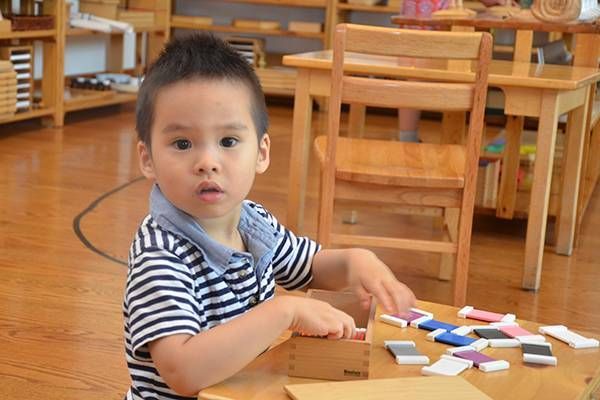
If you’ve been at a playground with young children, you’ve probably heard parents imploring their children: “You need to share!” At best, a child will hand over the toy, with a look of confusion or sadness on their face. At worst (and probably more frequently), they will cling even more tightly to the toy, resulting in a tantrum or a battle of the wills. These scenes play out on playgrounds, in sandboxes, and in homes across the world. It’s a natural and well-intentioned impulse on the part of the parents, who want their children to grow up with prosocial tendencies, and an ability to think about others and make friends. However, it is also a natural and well-intentioned impulse on the part of the child to hang on to their toys. Children don’t consciously have the same long-term goals as their parents, of course, but they are following a strong internal guide, which does ultimately want what’s best for them. A child under the age of six is “selfish” by necessity. In order to grow up to be an adult who is able to think about others and make friends, they must first go through this phase of development, where they will think almost entirely about themselves. Planes of Development Dr. Maria Montessori saw development as spanning four distinct planes: 0-6 years, 6-12, 12-18, and 18-24. Not until age 24 is a person’s brain fully developed. At this point they are considered a complete adult. Modern brain research supports Dr. Montessori’s observation, confirming that rapid brain development ends around age 25. For the purposes of this article, we will only delve deeply into this first plane—a young child, between the ages of 0 and 6 years. This is an inherently and essentially “selfish” plane. During this phase, children are entirely focused on becoming functioning people, who can walk, eat, communicate, and begin to think independently. Just imagine the tremendous changes that take place between a newborn and a six year old! A newborn can barely hold up their head and can only nourish themselves when their food source is placed right next to their mouth. A six-year-old can run, swim, bike, climb a tree, make themselves a sandwich, and tell you what happened last summer. The acquisitions that occur in the first plane of development are nothing short of miraculous. Their brains and being are focused on this extraordinary work. Given this perspective, the self-absorption of their work and understanding of the world is necessary and understandable. During these years, they aren’t meant to be thinking about others. They are meant to be employing their mental and physical efforts for their own development. The Montessori Classroom If you walk into a Montessori Young Children’s Community (for 1.5–3-year-olds) or Primary (for 3–6-year-olds), you will see how these individual needs are reflected in the classroom. The tables are designed for one child, the materials themselves are almost all designed for one child to use at a time, and most children will be working quietly and on their own. This is how they learn and develop. They need to be able to concentrate by themselves, and follow their own interests and impulses with the materials. They are not ready to incorporate other’s needs and desires into their work. Dr. Montessori observed that a child before the age of 6 is a distinct being from a child after the age of 6. A young child needs individual freedom to work and explore with activities, unencumbered from the opinions and agendas of their peers. After the age of 6, they become a much more social being. In the elementary classroom, you will notice that the tables seat four, and most materials are designed for groups of children. At this age, social activity motivates them to work. It is a very different plane from the younger child! Theory of Mind Modern research supports Dr. Montessori’s claim. Theory of Mind refers to a person’s ability to understand someone else’s perspective. This includes grasping something as concrete as another person’s visual field, as well as the abstractions of other people’s emotions, desires, and motivations. While Theory of Mind starts in the preschool years, the second order of Theory of Mind does not begin until after the age of 6, when children start to be able to predict what someone else is thinking or feeling, or will think or feel, given a certain set of circumstances. These are very sophisticated abilities! We do not need to worry or feel alarmed if our young children do not yet grasp their friend’s perspective. They are not hanging onto their toys because they do not want their friends to be happy. They are hanging on to their toys because they want to play, and they are developmentally unable to understand their friend’s point of view. This cannot be forced. Why Do We Care About Sharing? It can be tempting to think that we will teach our children to share by asking (or insisting). But perhaps the important question is - Why do I want my child to share? Is it because I want them to learn to think about others? Make friends? Be selfless? These are all important and useful values for a meaningful life, but taking a moment to consider where a young child is developmentally can help us to understand how to actually support them in their journey towards being a prosocial person with emotional intelligence and a selfless nature. A child who is resisting sharing isn’t resisting becoming a good adult. They are simply following the natural course of their development. These young years are a time for them to be thinking about their own needs. It is a necessity for them. In fact, demanding that they give away their toys while they are playing with them can have the unintended consequence of them becoming even more possessive with their things, or becoming apathetic, suppressing their positive natural urges for concentration and exploration. So What Do We Do? One way to verbalize a socially acceptable way of sharing resources is to state to your child, “You are having your turn. You may use it as long as you like. When you are finished, Amelia would like a turn.” Then inform Amelia, “You may have a turn when Teddy is finished. When it is your turn, you may use it for as long as you like.” This gives children words for how something might be shared between friends, giving them space to utilize the toy, and granting them both respect for their desires. And if a child continues to use the toy until the playtime is over, you can tell their friend, “Next time you will be able to use the toy.” There do not need to be any guarantees today. If a child is becoming emotional about wanting to use a toy, and fixating upon it, then try to distract them with something else. Sometimes this means that they need to physically move somewhere else. It is natural to feel that the most interesting toy is the toy that is in someone else’s hands! Removing your own emotional charge from the situation can help both children feel calm. The Caveats While we believe that a young child is rightly focused on their individual development, and should not be forced to share, it is extremely important to note that this does not mean that they are allowed free reign of any environment. In the classroom, we say that a child’s rights end where another child’s rights begin. This philosophy applies outside of the classroom, too. Children may not take someone else’s work. They may not disturb, distract, or destroy someone else’s work. They must abide by the routines of the day, and the expectations of their family and community - both for their safety, and for (a reasonable level of) peace and harmony. You are the adult. You are in charge. Other people’s emotions and thoughts matter. Protecting your child’s individual development does not mean they can trample on someone else’s. Final Thoughts At this age, not sharing is not a moral issue. It is developmental. Your child is following important and natural urges when they resist giving away their toys. Sharing is a point of arrival. Sharing means that a child feels safe and secure, and that they understand someone else’s perspective. It means they understand how someone else feels and why they want the toy. It means they are motivated to connect with others and want to build and maintain friendships. At best, forcing sharing too early only creates insecurity. At worst, it creates the expectation that you can demand that other people let you play with their toys. Children usually remember and imitate how you treat people more than they remember how you demanded that they treat others! The journey from “selfishness” to selflessness will not happen overnight. It will not happen in six years either. It is a journey that will take all of childhood and beyond. Keep this goal in mind and consider how you can support this value for your child: Patience, grace, and respect for where they are in their own journey.

I know I am not the only person who has re-defined the meaning of the word “essential” during this pandemic—or at least, come to a more nuanced understanding of it. As the world shut down in the spring of 2020, and we were driven to our homes, we called the people who did the work that absolutely had to be done “essential workers.” We wrote signs for garbage truck drivers, we thanked the grocery store cashiers profusely, and we wept with gratitude for the doctors and nurses who courageously showed up day after day in hospitals. Through this experience, we realized what work is truly essential to our daily living. Similarly, we developed a visceral understanding of the word as it applied to our own lives. We experienced how vital, and how fragile, the basic necessities of our world are—food, access to water for hygiene, possibilities for human connection. We experienced many of these as a loss or became aware of how tenuous our access to these essential requirements for healthy living are. I read recently that one of the gifts of winter is that it strips our lives down to what is essential. Winter lacks abundance, it lacks warmth, it lacks a feeling of limitless possibility. In winter, we remember what matters most, and we focus on and nurture those parts of our lives for the health and bounty of our spirit—no small task during cold, grey days. But the gift of this experience is the reminder of what matters. It is the opportunity to develop our relationship with these essential elements in our lives.
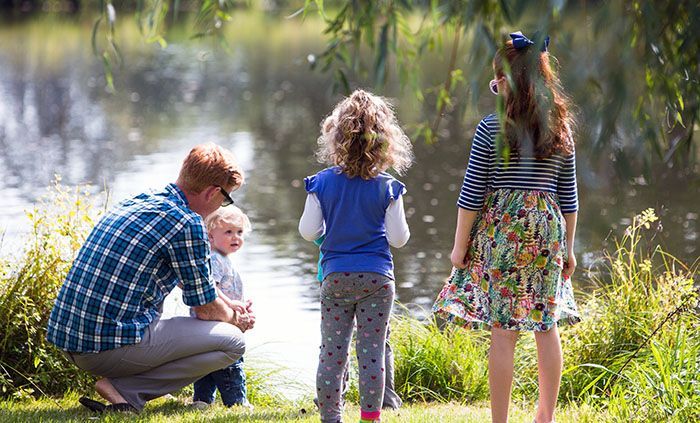
This post was originally published in 2017 and has been updated to include suggestions about how to talk to children about Coronavirus (See final section). Talking to Children About the Uncertainties of Life How do we talk to our children about unfortunate events such as terrorist acts, accidents, natural disasters, epidemics, mental illness, family deaths, divorce, or any surprise or situation that brings disappointment or painful emotions? There is no way to make these conversations easy, and there is no one-size-fits-all solution. But our children need these conversations, and we must be thoughtful with the words we use, knowing that they are watching us closely to learn about living with the uncertainties of life. We actually prepare our children for what may come in life every day—mostly unconsciously, though sometimes consciously—through modeling behaviors, making comments in their presence, or by saying something that gets a conversation started. Adults help children to dig down their roots of beliefs to make them strong, to reach for the sky in their hopes, and to embrace the beautiful cycles all around us. The biggest gift we can give our children is to teach them to embrace and appreciate this life. Most adults can recall moments, conversations, or behaviors they observed as children that helped them shape their own beliefs and attitudes for difficult times. From when I was five to 13 years old, several of the pets on our small farm died, from illness, accident, or old age. I was a big animal lover, so I was attached to each of them. What helped me to deal with such experiences were the hours upon hours that I spent in nature, the supportive community I was raised in, and the numerous little conversations I had with my mother. My mother had a very natural way of talking about life. She was very matter-of-fact about her spiritual beliefs; she prayed out loud and talked to God as if he were right there listening. She didn’t hide her tears or grief. She actually had some dire challenges of her own while I was growing up, and while she certainly did not go overboard by telling me too much, she spoke honestly if I asked questions. The impression she gave me was that hard things happen, that we can all handle them, that we have many resources for facing them, and that we are offered a helping hand by God if we seek it. (God in our family meant the Universe, the Spirits, or the power in Nature—we were free to choose). Through these conversations and my time spent pondering in nature, I created my own ideas about how and why things happen and what we can do to survive them. I wrote stories and thought about life’s mysteries. I found ways to comfort myself with my thoughts. The fact that my mother admitted to the mysteries and demonstrated her strong faith that goodness, truth, and beauty will eventually always triumph over evil gave me that special blend of reality and hope to work with.
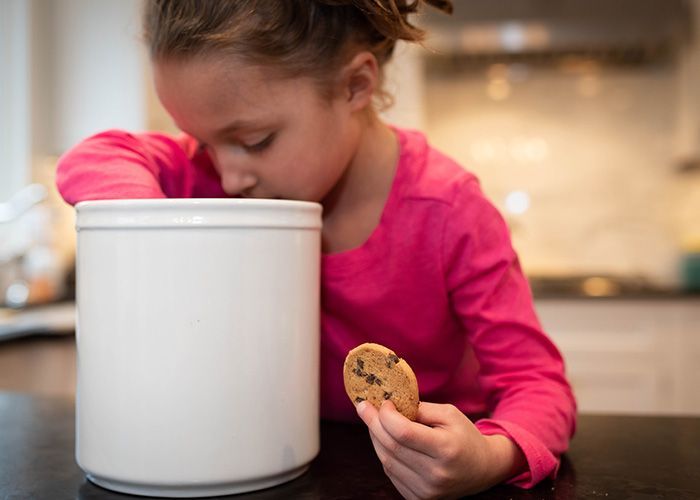
Stealing and Lying from a Montessori Perspective Stealing and lying are two deviations from healthy behavior. They are perfectly normal things for children to do, especially as they explore the range of societal behaviors during their elementary years*; expect that all children will spend some time experimenting with each. When they are testing out what will happen, most find out and logically stop doing it. But when a child develops a pattern of stealing or lying, what then? From a Montessori perspective, repeated stealing and lying are not “normal” behaviors for a child reaching their full potential of character. It’s like testing out something but getting stuck in the “repeat” mode and not being able to snap out of it. Everyone has a conscience, so if the conscience isn’t overriding the temporary benefits from the stealing ( Those cookies tasted great! ) or lying ( I got what I wanted again! ), then you need to step in to help. Dr. Montessori suggested that when the environment supports children’s human tendencies such as those towards work, order, exploration, communication, and manipulation (i.e., touching and movement) and frees up their inner energy for their self-formation, they will “normalize” themselves over time. This means that they become increasingly calm, focused, productive, happy, compassionate, organized, and all other positive qualities. In essence, they will reach their full potential—as unique as each one is—which is their “normalized” self. We see this happen with the children in our Montessori classrooms with their age-appropriate activities in school, and at home with similar satisfying opportunities. To create an environment that encourages this natural maturing process, we must offer useful activities that help children refocus on positive behaviors. Sometimes, we must remove distractions and temptations for a time. Socially, a child may be feeling uneasy or nervous and may get caught up in social drama, to then find themselves drawn to cause some trouble for others with stealing or lying. Whatever the reason a child chooses this anti-social behavior, they need assistance from the adults and other children to refocus their attention and energies on positive actions. Practical Suggestions for Helping Children who are Stealing or Lying If a child is stealing, tell them you need their help, and give them a positive role or job. Employ them in remedying the situation in a non-accusatory manner, perhaps by suggesting they organize the items in question. Point out to them afterwards how their actions helped the group/family or led to a chain of positive events. If a child is lying, and you are sure, gently call them on it (“Actually, that isn’t true”) and immediately point to what they can do that’s positive (“Your brother had his trucks in this basket, and we need to get them back in there. Could you help me look for them? Let’s start in the kitchen…”). The proposed activity might be a project, a piece of work, or something that interests your child. If you’re not sure whether they are lying or not, no matter; if you sense that it’s a lie, say, “Hmm, it just feels unsettling to me,” and progress with a project, an interest, or some positive action that your child can partake in.
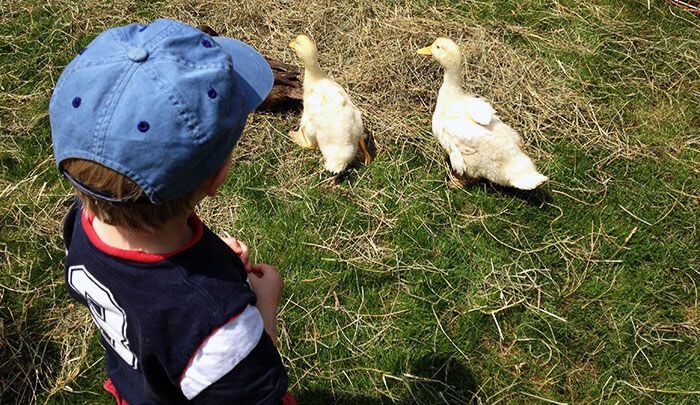
Talking to Children About Sex: What to do about The Talk? When I was in fourth grade, I asked my mother—just as she was biting into a Sunday night hamburger, as I remember—“Mom, what’s a ‘rubber?’” After a brief choke, she asked me why I asked. “Well, in this book a friend lent me at school, they keep talking about rolling on them. But…is it something you eat?” And thus began my mother’s version of “sex ed.” I still cringe when I think about the embarrassing experiences in biology class when we covered that chapter in the textbook, the graphic movies we had to watch, and the discussions about what our feelings over the whole thing might be, which we thought were “creepy.” That science teacher with the big mustache will be forever etched in my mind. What could be more personal than talking about sex? Every parent has a different approach to the topic, based on his or her own experiences, feelings, beliefs, and goals. And every single child is coming from a different place, with a unique personality, different questions, and varying readiness for the answers. Even more so than one’s development of a mathematical mind, language expression, or budding ability to recognize musical notes, talking about sex is not a one-size-fits-all topic. Although Maria Montessori did not directly address talking to children about sex, it’s safe to say she would advise keeping with her approach on everything: meet each child where he or she is, respond with profound respect, include the spiritual aspects of life, and help children make sense of the biology and the appropriate social manners. Many children, including adolescents, indicate that they are very uncomfortable having this topic discussed as a school subject. We believe the privacy of their own homes and the security of their families is the proper setting for a topic so deeply personal and important. According to clinical psychologist Sharon Maxwell , it’s important that parents address these messages on some level. This could be through comments we make, conversations, and modeling. We also need to give our children information about their bodies and relationships with others. About Those Birds and Bees… Rather than talking to children about sex in one big talk, it’s more realistic—and wiser—to tackle this in numerous, small conversations over the years, asking questions and trying to determine how much your child wants to know before launching in. (Your child may simply want to know what a “rubber” is, for instance, and be totally unprepared and disinterested in hearing about everything involved in its use and misuse!) On another day, a child may be asking for just one other bit of information.
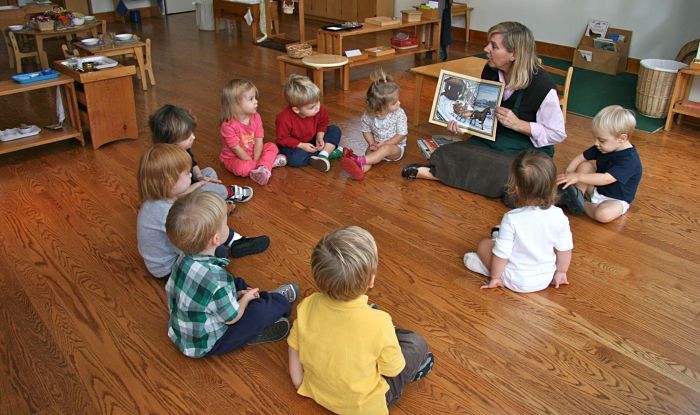
Dealing with Timeouts and Tantrums Who Are These People? Your child is sobbing and screaming in a puddle once again… Boy, do I know how maddening that feels as a parent! It brings to mind a comment I once heard by a stand-up comic, that working with little children is like being with “brain-damaged people.” What is wrong with these people? They are unreasonable, irresponsible, illogical, highly emotive, and self-centered. Let’s get a timeout! Maria Montessori’s perspective is our rescue when it comes to this problem, because she reminds us that children are different from us in numerous ways, and not only must we respect this, we must understand and take their developmental needs into consideration. The child’s purpose is to build a human being. They are in the process of developing – not fully formed as we are. If we can really wrap our minds around this point, it can guide us in our approach. Ultimately, our children will not only be relieved by having their needs addressed and their development supported, but we will enjoy our time with them much more. The Discipline Dilemma When it comes to “discipline issues,” it is much harder to be a parent than it is to be a Montessori teacher: The classroom environment is designed specifically to meet the needs of the children who enter it; our homes are designed for many other purposes and for more people with differing developmental needs. When children misbehave, the teacher does not take it personally, she can see the behavior objectively and in context, and she is there with a “present” mindset; parents have a ringing phone to answer, a dog vomiting on the floor, dishes piled in the sink, a wallet to locate, and children of different ages to herd into a car with the clock ticking in her head. Oh--and she takes things personally. Then, along comes the pediatrician’s advice to put a misbehaving child into a timeout – one minute in a chair facing the wall for each year of the child’s life – or some other punitive quick-fix. The problem is, even if these reactions work in the short term, they are often causing more problems in the long run. And much of the time – just ask around – they do not solve the problem at all. A Different Perspective: Our Montessori Framework Montessori does not give us direct instructions on discipline issues, for two reasons. First, there’s the famous, “it depends…” (on the child’s personality, development, history, the events leading up to the moment,) and second, parents must turn to their inner guide when it comes to finding the best answer, (following advice only if it fits your situation). Montessori was a proponent of inner freedom and individual choice, and this extends to how we should respond in certain situations. However, Montessori does give us all that we need to find the answers: A fundamental realization that the human being forms himself, and that he goes through developmental stages. When the developmental needs are met, the child succeeds in forming himself. Our adult role is to create an environment that meets the child’s needs. We must continually adjust the environment as the child’s needs change. We can do this by understanding – basically – what those needs are, and altering our homes and routines to meet those needs as best we can. (Alert – not always possible! Cut yourself some slack and do the best you can). The respect that human beings all need a balance of freedoms. By “balance,” I mean that freedom must come with boundaries. Both the freedoms and the boundaries are decided by, and enforced by, the adult. So, first we begin with these concepts. Set up the situation – let’s say it’s getting breakfast and preparing for school in the mornings – with these three things in mind. For example, set up your kitchen so that your children can get what they need for breakfast and clean it up fairly independently. Show the children how to do things for themselves as much as possible, then step away to take care for your own needs so that the children can have space to try things out. The routine should be consistent enough that your children know what to expect. Provide some freedoms within boundaries – such as a choice of two things they could make for breakfast. Setting the stage for success in this way helps your children to manage themselves to the best of their ability. Then Comes the Blow Up Even when you have followed this example, however, we all know that children have their challenging moments. When your child gets upset, first take a long, deep breath and stand still for a moment. Much of the time, stress expressed in a tantrum has to do with a build up of emotional frustration, and adding your own to the situation just makes it worse. Be the leader – see that she is suffering and stay calmly objective as best you can. Children often just need a little compassion. It’s amazing how effective a spontaneous hug, a sympathetic sound, or some silent assistance, can save the day. Your attitude of acceptance – self- acceptance first and foremost – is the best way to put things back on track. This does not involve a lot of talking, reasoning, or questioning. Just give the hug, make the sound, or lend the helping hand. This is probably what you would want someone to do for you when you’re at your wit’s end, so try to model that example.
